I am Karen Ingalls, a Registered Nurse with a Master’s Degree in Human Development, and when I was told in 2008 I had Stage IIC of ovarian cancer, I only knew that it is a deadly form of cancer. How could this be? I was 67 years old, only took one prescription pill for insomnia, exercised, ate “right,” and was of normal weight. I had no family history, except for one Aunt who had breast cancer when she was a young mother. My only symptom was bloating, which appears to be the most common symptom. However, what woman, who is postmenopausal, does not have bloating or weight gain?
I never learned in nurse’s training about gynecologic disorders or diseases, my mother did not know about it, it was not taught when I watched the Disney movie about menstruation. So it is not surprising that most women are not aware of this too often deadly disease. It has been my experience in talking to nurses and nursing students that there is still a great lacking of such education.
What Causes Ovarian Cancer?
There is no one clear cause yet determined for the occurrence of ovarian cancer. Like any cancer, something causes healthy cells to mutate and quickly multiply into nearby tissue. What triggering factor or factors are there? At this point there are only theories, no proven facts, except for the genetic mutation of BRAC 1 and BRAC 2.
There is no reliable test; only the CA125, which is a protein found in greater concentration in tumor cells than in other cells of the body. It can be elevated for such conditions as inflammation, pregnancy, fibroids, and so forth. Only about 3% of women with elevated CA125 levels have ovarian cancer.
Ovarian cancer can be very subtle with its symptoms, and too often they mimic such disorders as Irritable Bowel Syndrome, a peritoneal form of tuberculosis, pelvic abscesses, and gastrointestinal abnormalities. Sometimes it is referred to it as the silent killer, but according to several sources it is not so silent. Women and their physicians are not listening:
“…women with ovarian pathology are more likely to experience a specific constellation of symptoms that are more severe and frequent than their counterparts presenting to primary care clinics. Women presenting with non-specific symptoms, particularly if severe intensity or rapid onset, should be thoroughly evaluated for the possibility that the symptoms are due to an ovarian mass.”
I had no physician in Florida where we were spending the winter so I did not seek any medical attention. I exercised more and tried to eat fewer calories to stop my ever-growing girth. In late May, four months after the first awareness of the bloating we returned to Minnesota and I saw my gynecologist in early June. Before I had a chance to talk to her about my bloating abdomen, she was trying to place the speculum into my vagina to collect a specimen for the annual PAP smear. She could not get it in! She asked about my family history and questioned about any symptoms besides the bloating.
The next day I had a CT scan, followed by an MRI two days later. She referred me to a gynecologic oncologist, who I saw immediately after office hours. At that time he said my tumor appeared to be about the size of a honeydew melon, and possibly could be benign due to its size. I had massive surgery one week later.
Approximately 250,000 women worldwide will be diagnosed with ovarian cancer and about 114,000 will not survive 5 years. This disease can affect any female, from a young child, to a teen, a young mother, or a grandmother. It is more common in white women than blacks, but it does occur in any race and everywhere in the world.
It is vitally important for every female to listen to and be aware of any unusual symptoms occurring below the waist, just as they do above the waist. Once we women started doing self-breast exams, got mammograms, and sought out medical counsel, the incidence of advanced breast cancer cases decreased. We need to do the same for our abdominal area.
Symptoms of Ovarian Cancer
- Pelvic or abdominal pain
- Bloating
- Back pain
- Digestive problems (loss of appetite, increased gas, feeling full quickly)
- Constipation
- Urinary problems
- Painful intercourse
- Fatigue
- Vaginal bleeding
Certain risk factors can be important aspects for the woman to give attention to, and report to her physician. Here is a list of common ones in no particular order.
Risk Factors for Ovarian Cancer
- Family history of ovarian, breast, or colon cancers.
- Tested positive for the BRCA 1 and/or BRCA 2 mutated gene
- Ashkenazi Jewish heritage
- Most common in women over 65 years old
- History of polycystic syndrome
- Smoking history
- Never having been pregnant
- Taken estrogen hormone replacement therapy
- Menstruated before age 12, or started menopause after 52 years, or both
- Fertility treatment
Breast, Colon, and Ovarian Cancers
Family history of breast, colon, and ovarian cancer put women at a higher risk. These cancers can be caused by an inherited mutation in certain genes. There will be more information forthcoming in the next article, Hormones and Ovarian Cancer.
BRCA 1 and BRCA 2 and Ashkenazi Jewish Heritage
There is evidence to show that those women of Eastern Jewish descent are likely to have either one, or both, the BRCA 1 and BRCA 2 genes, which put such women at higher risk of developing breast and ovarian cancers. These mutated genes “account for around 15% of ovarian cancers overall.”
Does Age Affect your Risk?
The majority of ovarian cancers occur in women over 65 years of age. A higher percentage of post-menopausal women develop ovarian cancer compared to pre-menopausal women. However, there are a significant number of women in the 20-40 year range who have developed ovarian cancer. For example I did a non-scientific survey of ovarian cancer women who answered a few questions. Of the 544 responses, the youngest was 21 and the oldest was 78 when diagnosed; and 142 were between 20 and 50 years old, or 4% of the surveyed women. The average age in this small survey was 49 years.
Endometriosis and Polycystic Syndrome
Women who develop endometriosis have an approximately 30% higher risk of developing ovarian cancer compared to other women. Endometriosis is a condition in which cells that are normally found inside the uterus (endometrial cells) are found growing outside of the uterus. Danazol, a medication used to treat endometriosis has been linked to ovarian cancer risk.
“Women with Polycystic Ovary Syndrome (PCOS) also may be at higher risk for breast cancer and ovarian cancer. Small studies have suggested that a lack of ovulation (anovulation), as occurs with PCOS, is linked with a risk of breast cancer that is three to four times that of women without anovulation. In other research, results showed more than a doubling of the risk of ovarian cancer in women with PCOS, but scientists have not confirmed these links in large population studies.“
Urination Frequency
Women often claim how they have an urgency and frequency to urinate. Sometimes this is strictly due to the loss of muscle tone, but it can be due to the pressure of a tumor or tumors on the bladder. This is a common complaint when women need to seek out medical attention.
Change in Bowels
If there has been increased constipation, change in color or form, or diarrhea there are several diagnoses that are possible, and ovarian cancer is one. If any of the described changes in the bowels are not resolved in 2 weeks despite medications, a physician needs to be consulted. A tumor(s) might be penetrating into the colon or rectum.
Dietary Changes
A common symptom is women describing “feeling full after only eating a small amount.” Or there might be increased belching or just a loss of appetite. Again, these symptoms could be attributed to other disorders or diseases, but they are common with women with ovarian cancer.
The last four symptoms will be included in the next article, which will be about hormones and ovarian cancer. It is a subject that will be more detailed, require more scientific data, and will be best in a topic by itself.
My risk factors were my age of 67 years and the family history of one aunt who had breast cancer. Genetic testing for the BRCA 1 and BRCA 2 was negative. The debulking surgery removed a large mass that was diagnosed as a Malignant Mixed Mullerian Tumor, which is a mix of both carcinoma and sarcoma. It is considered very rare and quite aggressive. I am fortunate that my cancer was discovered and treated at Stage IIC, and I was cancer free for five years before I had my first recurrence. There will be more about treatment in another segment.
I never took birth control pills because I did not believe in “fooling around with Mother Nature.” Nor did I ever take hormone replacement pills to help with the symptoms of menopause, which I had minimally and did not think I needed any pill for them. The decisions I made to keep my body healthy for the past 76 years I believe helped me to tolerate the major surgery and chemo cycles very well.
Depending on the woman’s symptoms, severity, rapidity of onset, and her family history she may need to demand an abdominal ultrasound, CA125 blood test, and pelvic and rectal exams. Women know their bodies and frequently they have said words to the affect, “I knew something was not right.”
There are symptom cards and symptom calendars that are small and easy to use. If even just one symptom persists for two weeks despite any medicine, exercise, or dietary changes, it is recommended by the Ovarian Cancer National Alliance, the National Ovarian Cancer Coalition, and many other such organizations that a woman should seek medical attention immediately.
Resources
It is my mission in life to help women to know its symptoms and act upon them after two weeks of experiencing any of them. Here are some links to obtain these symptom cards:
- Symptoms alone don’t spot ovarian cancer early
- Ovarian cancer symptom diary
- Ovarian.org, Spread the word
- Cause keepers, ovarian cancer national alliance
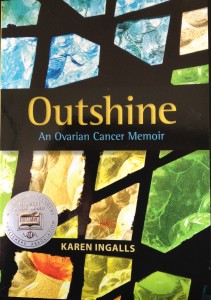 About the author: Karen Ingalls is the author of the award-winning book, Outshine: An Ovarian Cancer Memoir, which discusses the symptoms, risk factors, and statistics of this lesser known disease; shares her journey; and how she used traditional medicine and complementary therapies together. She writes how “the beauty of the soul, the real me and the real you, outshines the effects of cancer, chemotherapy, and radiation.”
About the author: Karen Ingalls is the author of the award-winning book, Outshine: An Ovarian Cancer Memoir, which discusses the symptoms, risk factors, and statistics of this lesser known disease; shares her journey; and how she used traditional medicine and complementary therapies together. She writes how “the beauty of the soul, the real me and the real you, outshines the effects of cancer, chemotherapy, and radiation.”
- Outshine Ovarian Cancer
- Outshine Ovarian Cancer Blog
- Outshine Ovarian Cancer on Amazon
- @karneningalls1
- Karen Ingalls – Linkedin
Available in paperback and Kindle edition.
ALL PROCEEDS GO TO GYNECOLOGIC CANCER RESEARCH
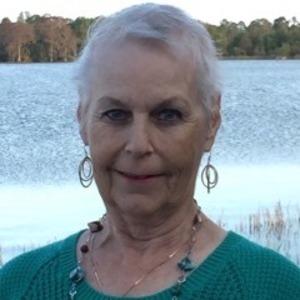

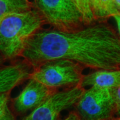
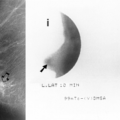
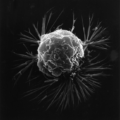




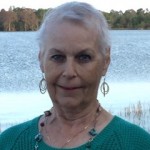

Question I have: Whatis implantable disease in the peritoneal cavity. The same as tumors or masses.